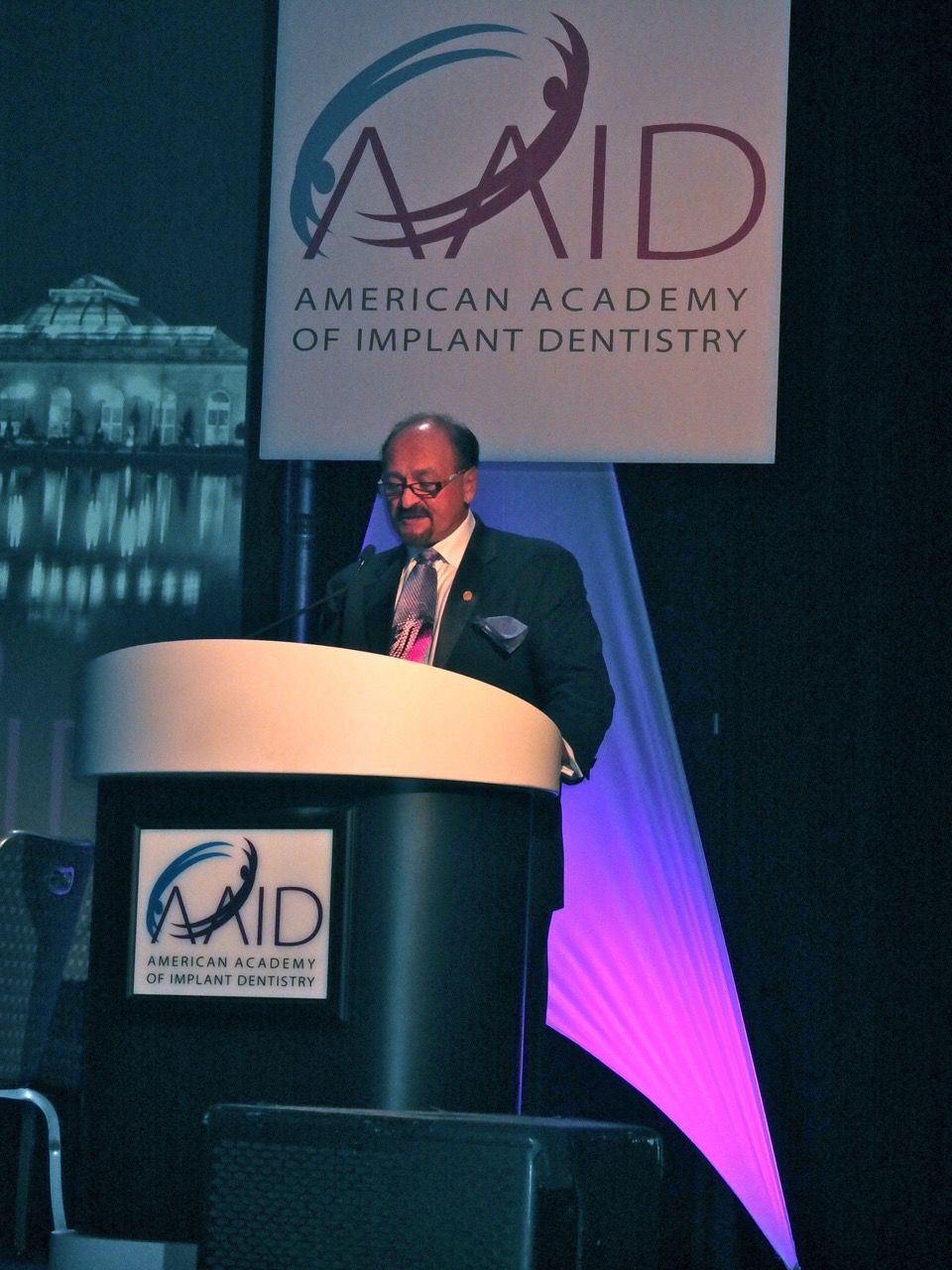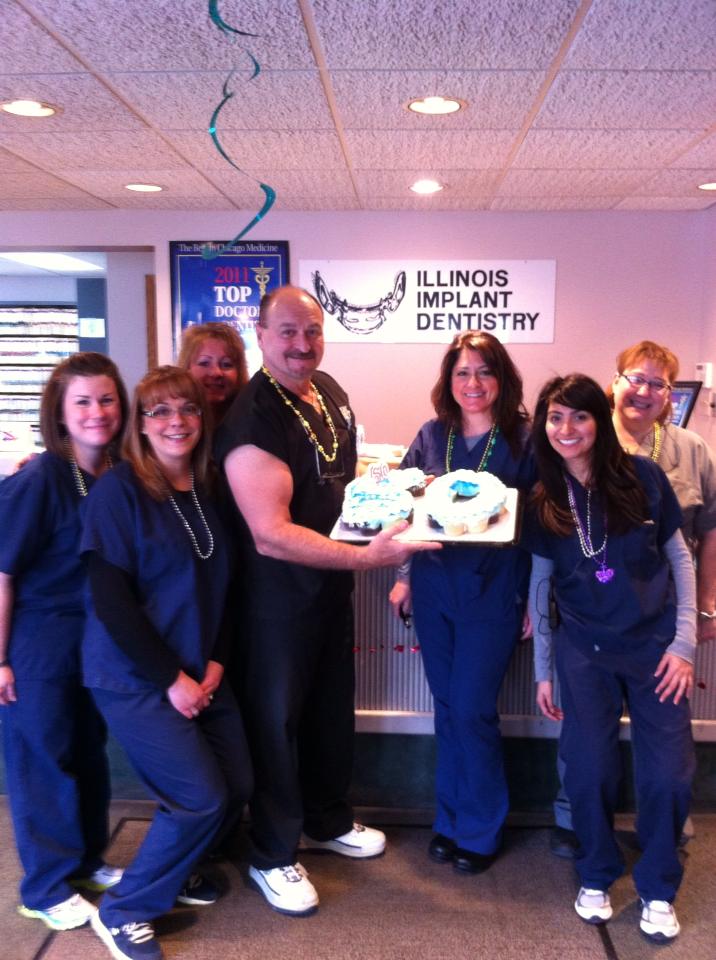Dr. Joseph F. Orrico graduated from Loyola University School of Dentistry in Chicago. He has been practicing dental implant surgery and implant related prosthetics since 1979.
Dr. Orrico has been associated with the American Academy of Implant Dentistry since 1980. He became an associate fellow in 1984 and earned his fellowship in 1990. In 1990, he also became a Diplomate of the American Board of Oral Implantology/Implant Dentistry. He was the 20th member to achieve this status.
He has served as an examiner for the American Academy of Implant Dentistry Admission and Credentials Board since 2000 and also served as an examiner for the American Board of Oral Implantology/Implant Dentistry in 2006-2008.
In 2007, Dr. Orrico’s years of service were recognized by the American Academy of Implant Dentistry as he was elected to take the position of Secretary by his colleagues. After successfully serving the Academy in the position for a year, Dr. Orrico was then elected to the position of Treasurer (2008), Vice President (2009), and President-Elect (2010) . Currently (2011), he is serving as the President of the American Academy of Implant Dentistry. Dr. Orrico’s continued commitment to the success of the Academy drives him to execute all duties of the prestigious honors bestowed upon him.
Dental Implants
During the last 20 years dental implants have become a great alternative to other methods of replacing missing teeth. Excellent success rates and a variety of available options give dentists many new ways to treat and replace lost teeth.
Your dentist will be able to evaluate your case and tell you if you are a candidate for dental implants. Basically, a dental implant is a Titanium based cylinder that replaces the missing tooth root. After a period of time and when the implant is taken other parts will be placed on the implant that enables your dentist to eventually place a crown (cap) on the implant.
Implants also can be used to support full or partial dentures. They dramatically improve the denture retention and stability.
Most patients with enough amount of bone can have implants, although individual decisions are made between you and your dentist. Usually an x-ray and a CT-scan is done to determine if you have enough bone to place the implant and also to determine the size and kind of the implant that should be placed.
Dental Crown
A crown (cap) is a restoration that is placed on teeth that have lost a lot of their structure. There are many different types of crowns, full porcelain, porcelain fused to metal, full metal crowns… Your dentist will explain the advantage and disadvantage of each kind for you.
The process of making a crown includes many steps that start in our office with preparing the teeth and taking impressions from the tooth/teeth involved. Then a temporary crown or bridge is placed on your teeth.
The impressions are sent to the lab. In the lab a mold of the teeth is poured and the work begins.
There are multiple steps and different technicians work on the mold to fabricate a crown or bridge. The completed work is sent back to the office and after necessary checks and adjustments it is cemented onto your teeth.
Teeth Whitening
Teeth stain during our lifetime due to consumption of a variety of foods and drinks (Coke, spicy food, coffee…) New technology of teeth whitening has enabled dentists to whiten teeth without any change or damage to the tooth structure.
Almost all the whitening methods are similar in concept but some are much more effective because of the way the whitening material is delivered to the teeth. The other factor in effectiveness of the method is the concentration of material, which is the reason why over the counter whitening systems usually don t give patients the result they are hoping for.
The two main methods of professional whitening are tray whitening and in office whitening. Tray whitening is when a custom tray is made for the patient after an impression is taken, then a supply of whitening gel is given to the patient and he/she will wear the tray for a few hours a day (techniques differ) for a period of time until an acceptable result is achieved. Sensitivity of the teeth is a normal complication of this method of whitening and is almost always transitional.
Veneers & Laminates
This is how you can get a beautiful smile quickly. Veneers or Laminates are a thin shell of porcelain or resin that is bonded to the surface of the teeth to change their shape, shade and position to improve the cosmetics of your teeth and smile and/or replace and restore the lost tooth structure where it is indicated
Your dentist will do a complete examination of your teeth and will determine if veneers are indicated for you. Usually with veneers it is possible to improve the esthetics of your teeth and smile dramatically.
Veneers can improve the shape of your teeth, make your teeth as white as you want and give you the smile you have always wanted. Veneers are bonded to your tooth structure, which gives them strength.
Also because they are very thin, they are considered one of the most conservative cosmetic treatments available. Most of the times very little or no tooth structure is removed before placing veneers. Ask your dentist how veneers can improve your smile.






